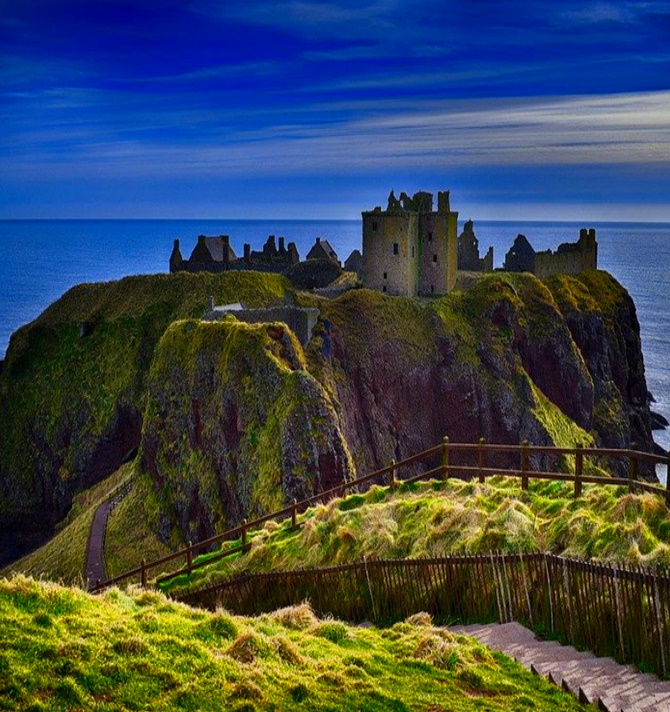Few trips to Scotland could really be considered complete without Edinburgh. The Scottish capital is frequently regarded as one of the UK’s most charismatic cities and famed for being an arts, entertainment and hospitality centre. Most visitors will prioritise the castle that overlooks the city below. Greyfriars Bobby, Holyrood Palace, and the various galleries are all legitimate attractions. Princes Street is the main shopping thoroughfare with its adjacent gardens providing respite. In August the city hosts its world renowned ‘festival’ which makes it a particular vibrant (if expensive) time to visit
With its ruined old castle and cathedral, plus its natural charisma, St Andrews is a legitimate visitor draw regardless of its golf. Further along the coast of Fife we have a series of picturesque fishing villages, whereas inland we have Falkland Palace and Aberdour Castle on the ‘Outlander’ trail. If playing Carnoustie then Glamis Castle is only just to the north, which is one of Scotland’s most impressive and decidedly spooky citadels
combines with St Andrews & Carnoustie

Glencoe.
The Highlands is where landscape and history collide. This is the land of deep lochs, moody glens, pine forests, clan feuds, and of course, legendry monsters. One of the highlights is the battlefield of Culloden (1746). If you ‘get’ Culloden, you’ll have gone a long way to understanding Scotland. The ruin of Urquhart Castle overlooks Loch Ness itself. The most impressive of Scotland’s great houses however in Dunrobin Castle which really looks like it belongs in the Loire valley rather than Sutherland.
Culloden combines with Castle Stuart and Nairn. Dunrobin Castle with Royal Dornoch. Loch Ness can be visited from any of the three golf courses
Aberdeenshire needn’t be the strongest region but isn’t without interest. Dunnottar Castle is an impressive ruin sitting on a promontory, Scotland’s Machu Picchu! A lot of the interest lies inland however, along the valley of the River Dee, including the royal estate of Balmoral Castle and the traditional highland centre of Braemar. The probability that any itinerary that goes to Aberdeenshire has come from the highlands which means crossing the River Spey, the heart of whisky producing country. You should easily be able to add a distillery or three to your haul
combines with Cruden Bay, and Aberdeen

Dunnottar Castle.
The A9 runs north to south and the Perthshire section has a string of pearls. Scone Palace is the crowning seat of ancient Scottish Kings. The ‘Queens View’ looking down the length of Loch Tummel is renowned beauty spot. Killiecrankie combines a river gorge with a battlefield (1689). Blair Castle, ancestral home to the Clan Murray is Scotland’s ‘white house’. If you wanted to add a marque whisky then the Blair Athol Distillery (Bells) is in amongst the cluster, whilst it finishes with the ‘House of Bruar’, a high-quality retail outlet village with the best of Scottish produce
Combines with Gleneagles, and journeys to the Highlands
In truth, of all Scotland’s sub-regions, Ayrshire probably has the least to offer non-golfing visitors (somewhere has to). Glasgow is near enough to the north however to offer some urban interest, and Loch Lomond is only a bit further on. Culturally Ayrshire is ‘Burns Country’ for the literary culture vultures. Culzean Castle is the most significant historic building on the coastline, whereas as boat trips out to the Isle of Arran or Ailsa Craig can also add enough legitimate interest
combines with Troon, Turnberry & Prestwick